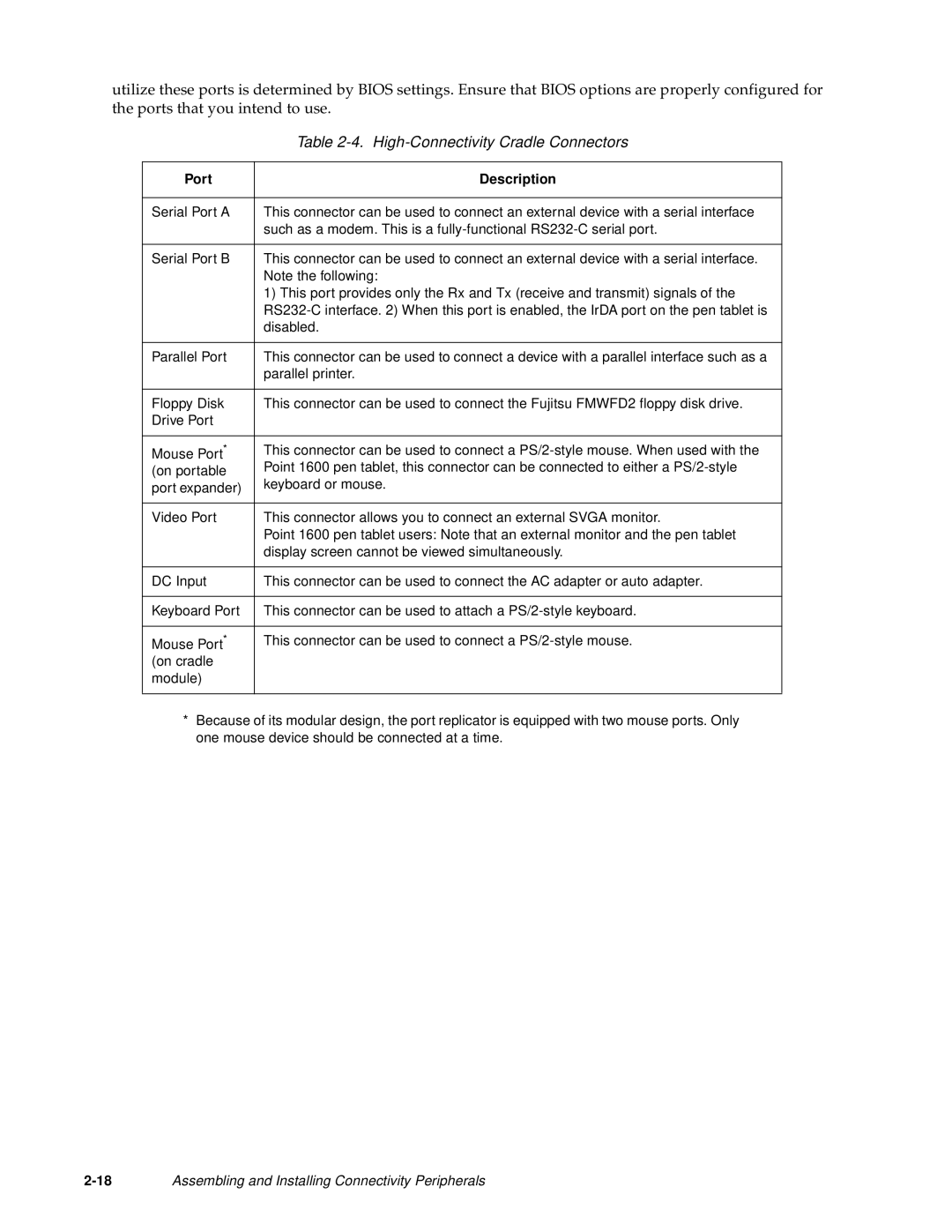utilize these ports is determined by BIOS settings. Ensure that BIOS options are properly configured for the ports that you intend to use.
| Table |
|
|
Port | Description |
|
|
Serial Port A | This connector can be used to connect an external device with a serial interface |
| such as a modem. This is a |
|
|
Serial Port B | This connector can be used to connect an external device with a serial interface. |
| Note the following: |
| 1) This port provides only the Rx and Tx (receive and transmit) signals of the |
| |
| disabled. |
|
|
Parallel Port | This connector can be used to connect a device with a parallel interface such as a |
| parallel printer. |
|
|
Floppy Disk | This connector can be used to connect the Fujitsu FMWFD2 floppy disk drive. |
Drive Port |
|
|
|
Mouse Port* | This connector can be used to connect a |
(on portable | Point 1600 pen tablet, this connector can be connected to either a |
port expander) | keyboard or mouse. |
|
|
Video Port | This connector allows you to connect an external SVGA monitor. |
| Point 1600 pen tablet users: Note that an external monitor and the pen tablet |
| display screen cannot be viewed simultaneously. |
|
|
DC Input | This connector can be used to connect the AC adapter or auto adapter. |
|
|
Keyboard Port | This connector can be used to attach a |
|
|
Mouse Port* | This connector can be used to connect a |
(on cradle |
|
module) |
|
|
|
*Because of its modular design, the port replicator is equipped with two mouse ports. Only one mouse device should be connected at a time.
Assembling and Installing Connectivity Peripherals |
